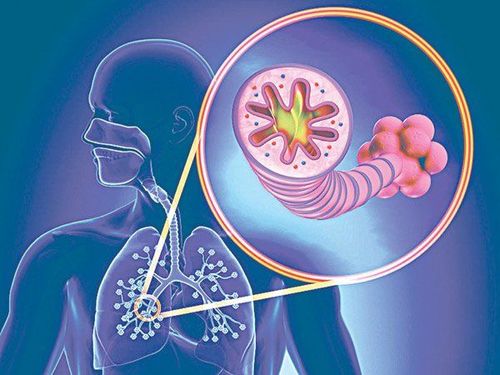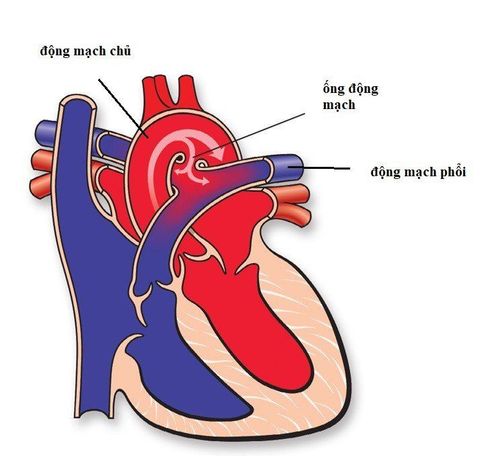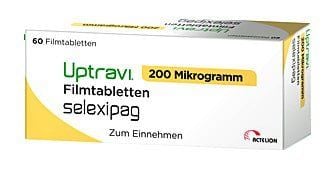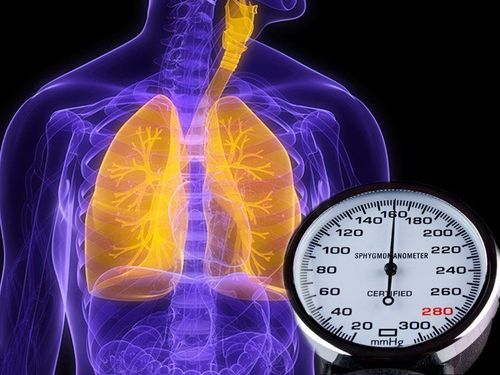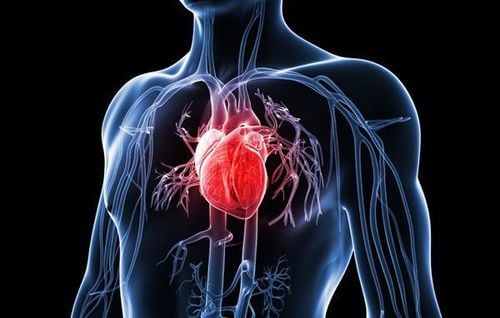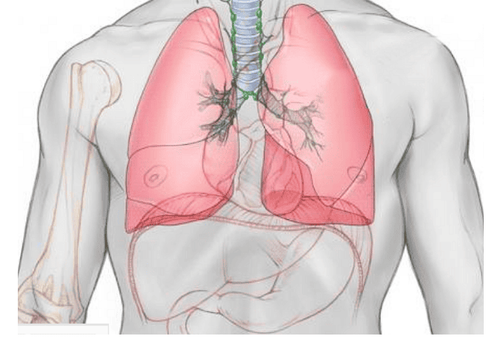This is an automatically translated article.
The article is professionally consulted by Master, Doctor Le Hong Chien - Doctor of Radiology - Intervention - Department of Diagnostic Imaging and Nuclear Medicine - Vinmec Times City International General Hospital.Digitized pulmonary angiography with iodine contrast is a technique to help doctors identify abnormalities of the pulmonary arteries such as: congenital, acquired abnormalities (aneurysms), pulmonary artery thrombosis.. From there, it can be handled promptly due to the blockage, thereby re-opening the pulmonary vessels.
1. What is an iodinated contrast digital pulmonary angiogram?
Digitized pulmonary angiography with iodinated contrast is used to visualize the pulmonary artery on a screen by injecting iodinated contrast agent directly into the artery.According to the Seldinger method, the entrance is from the femoral vein, possibly from the subclavian and internal jugular veins into the superior vena cava into the right atrium to the right ventricle and into the pulmonary artery. From there, it is possible to intervene in the patient's pathology such as: Embolism, thrombectomy, fibrinolysis...
2. When is digitized pulmonary angiography with iodine contrast indicated?
In case a digital angiogram with iodine contrast is indicated when the doctor is suspicious, it is necessary to determine the abnormalities of the pulmonary artery such as: congenital abnormalities, acquired (bulge), thrombosis pulmonary artery ... Need intervention to turn off the abnormality from which to re-open the pulmonary artery.Indications for this pulmonary angiogram, although there is no absolute contraindication, but in some cases, the patient is in a state of severe organ failure (liver, kidney..), thrombosis in the right atrium, drug allergy to the patient. ophthalmology, pregnant women, doctors still have to carefully consider and evaluate each person's condition to decide whether to perform or not.

Chỉ định chụp động mạch phổi khi bác sĩ thấy nghi ngờ, cần xác định những bất thường của động mạch phổi
3. Background erasing digital pulmonary angiography with iodine contrast agent
3.1 Executor
Implementation will include 1 specialist doctor, 1 support nurse, 1 radiology technician. Anesthesiologist to monitor the patient's progress if the patient has an indication for anesthesia.Usually children under 5 years old or those who are not awake and do not cooperate with the doctor will do the anesthesia.
3.2 Asking the patient
● The patient has been carefully explained by the doctor about the procedure to coordinate● Need to fast before 6 hours. Can drink no more than 50ml of water.
3.3 Implementation process
● In the intervention room: The patient lies on his back, has a machine to monitor breathing, pulse, blood pressure, electrocardiogram, SpO2. Disinfect the skin, then cover with a sterile, perforated cloth.● Anesthesia method
● Place the patient supine on the scanning table, place an intravenous line, pre-anesthesia or anesthetic if necessary (patient is not alert, young child...)
● Select technique and route Inlet of the catheter: According to the Seldinger method, the entrance can be from the femoral vein, brachial vein, and jugular vein. Usually the femoral vein, unless this route does not work, then choose other routes.

Quy trình chụp động mạch phổi số hoá xoá nền
3.4 Performing the trick
● The nurse disinfects the groin area on both sides (the way to the femoral vein).● Anesthetize the site where the catheter is inserted into the lumen.
● Needle puncture, put the kit into the femoral vein.
● Insert the lead and angiogram through the catheter into the inferior vena cava, up the right atrium, into the right ventricle, and up the aorta.
● Pulmonary angiography with contrast agent through a syringe can show the entire right and left pulmonary artery system, identify abnormalities: Aneurysm, malformation, thrombosis...
● Obstruction, abnormal recanalization usually by means of embolization, angioplasty, and specialized thrombectomy.
● Withdraw the catheter and tube into the lumen after satisfactory angiography and intervention, apply gentle pressure by hand to stop bleeding for 15 minutes, then apply pressure for 6-8 hours.
● Select the catheter technique and access route: According to the Seldinger method, the entrance can be from the femoral vein, brachial vein, and jugular vein. Usually the femoral vein, unless this route does not work, then choose other routes.
● The nurse disinfects the groin area on both sides (the way to the femoral vein). Stretch, try to cover the entire patient, leave open the puncture site, the place where the catheter is inserted into the angiogram.
● Anesthetize the site where the catheter is inserted into the lumen.
● Needle puncture, put the kit into the femoral vein.
● Insert the lead and angiogram through the catheter into the inferior vena cava, up the right atrium, into the right ventricle, and up the aorta.
● Pulmonary angiography with contrast agent through a syringe can show the entire right and left pulmonary artery system, identify abnormalities: Aneurysm, malformation, thrombosis...
● Obstruction, abnormal recanalization usually by means of embolization, angioplasty, and specialized thrombectomy.
● Withdraw the catheter and tube into the lumen after satisfactory angiography and intervention, apply gentle pressure by hand to stop bleeding for 15 minutes, then apply pressure for 6 hours.
● After finishing the digital pulmonary angiography procedure with iodine contrast, the patient lies on the bed to rest, the nurse will monitor the dorsal pulse, monitor bleeding, hematoma at the puncture site and Monitor the whole body (pulse, blood pressure, patient response).
Vinmec International General Hospital has applied the technique of digital pulmonary angiography to erase the background in the examination, diagnosis and detection of diseases for patients. All medical examination and examination procedures are performed by a team of doctors with many years of experience. Combined with that is a system of modern machinery and equipment. Thanks to good medical conditions, patients can be assured of the diagnosis results as well as the treatment direction when prescribed by the doctor.
Master. Dr. Le Hong Chien has many years of experience working in the field of diagnostic imaging and interventional radiology (endovascular intervention and extravascular intervention). Before being a Doctor of Diagnostic Imaging - Intervention at Vinmec Times City International Hospital, Dr. Chien was a Doctor at the Department of Diagnostic Imaging, Hospital 19.8 - Ministry of Public Security and Hong Ngoc General Hospital. .
Any questions that need to be answered by a specialist doctor as well as customers wishing to be examined and treated at Vinmec International General Hospital, you can contact Vinmec Health System nationwide or register online HERE.
MORE
What is pulmonary hypertension? How dangerous is pulmonary hypertension? Overview of common diseases in the lungs





